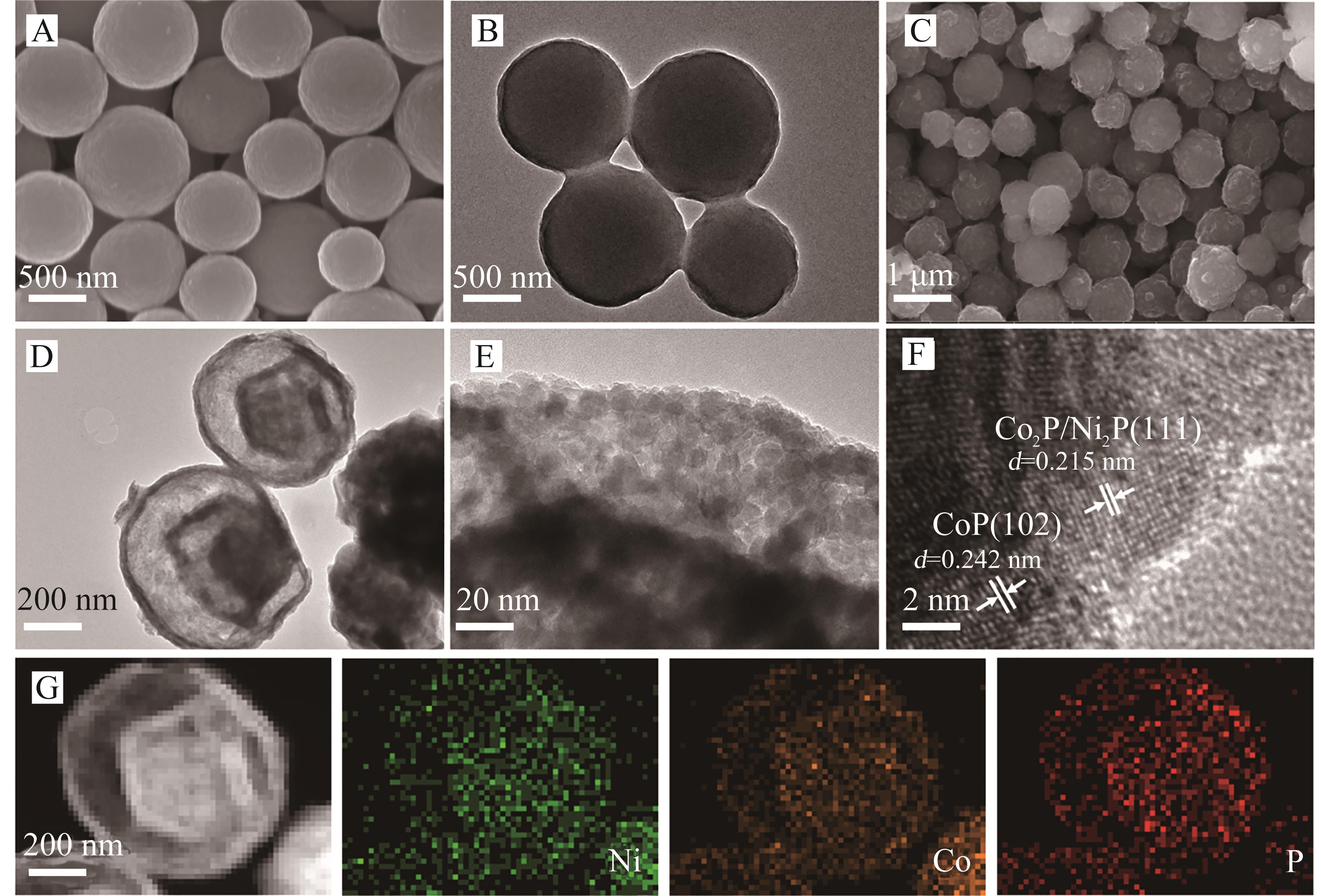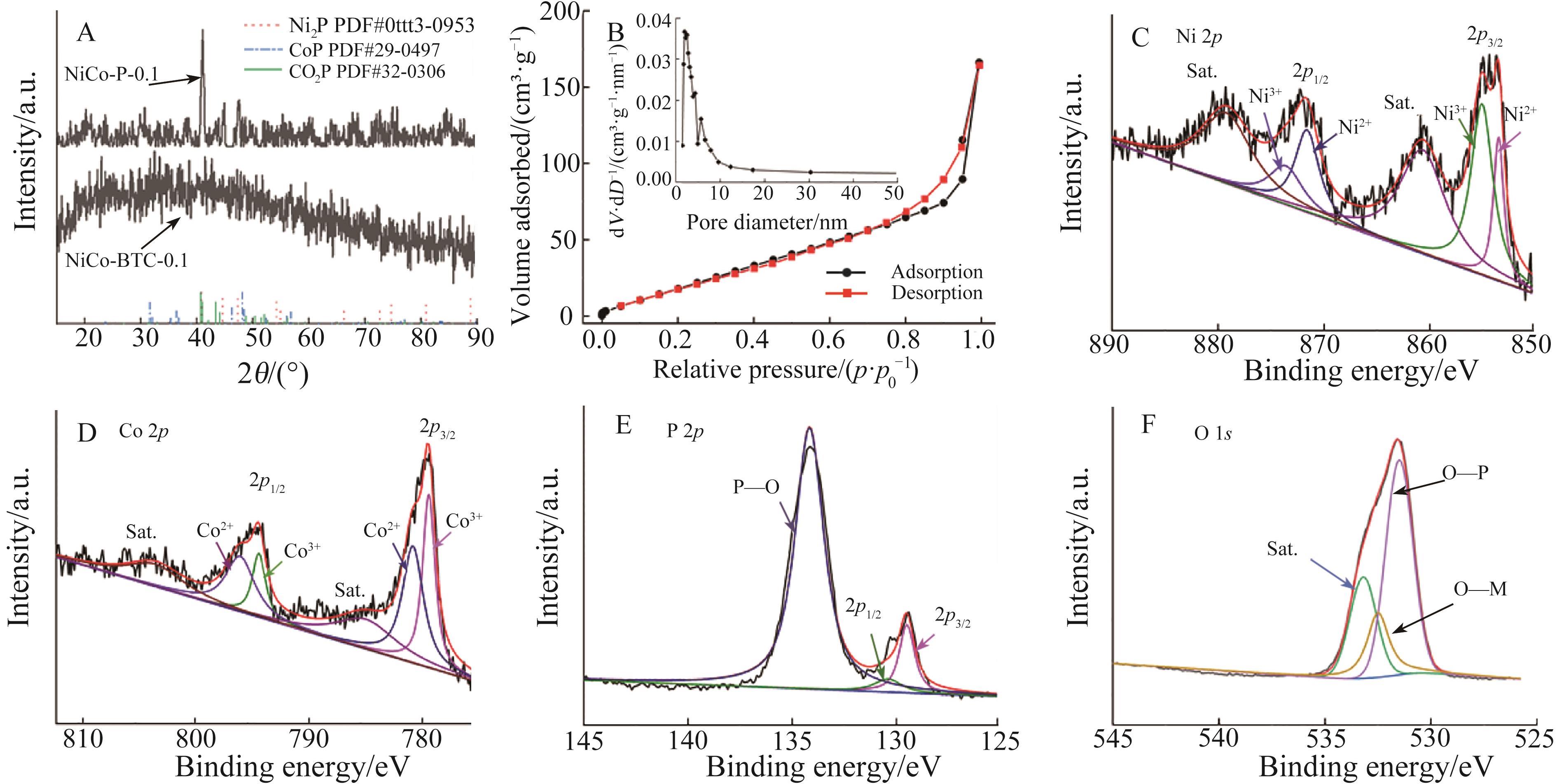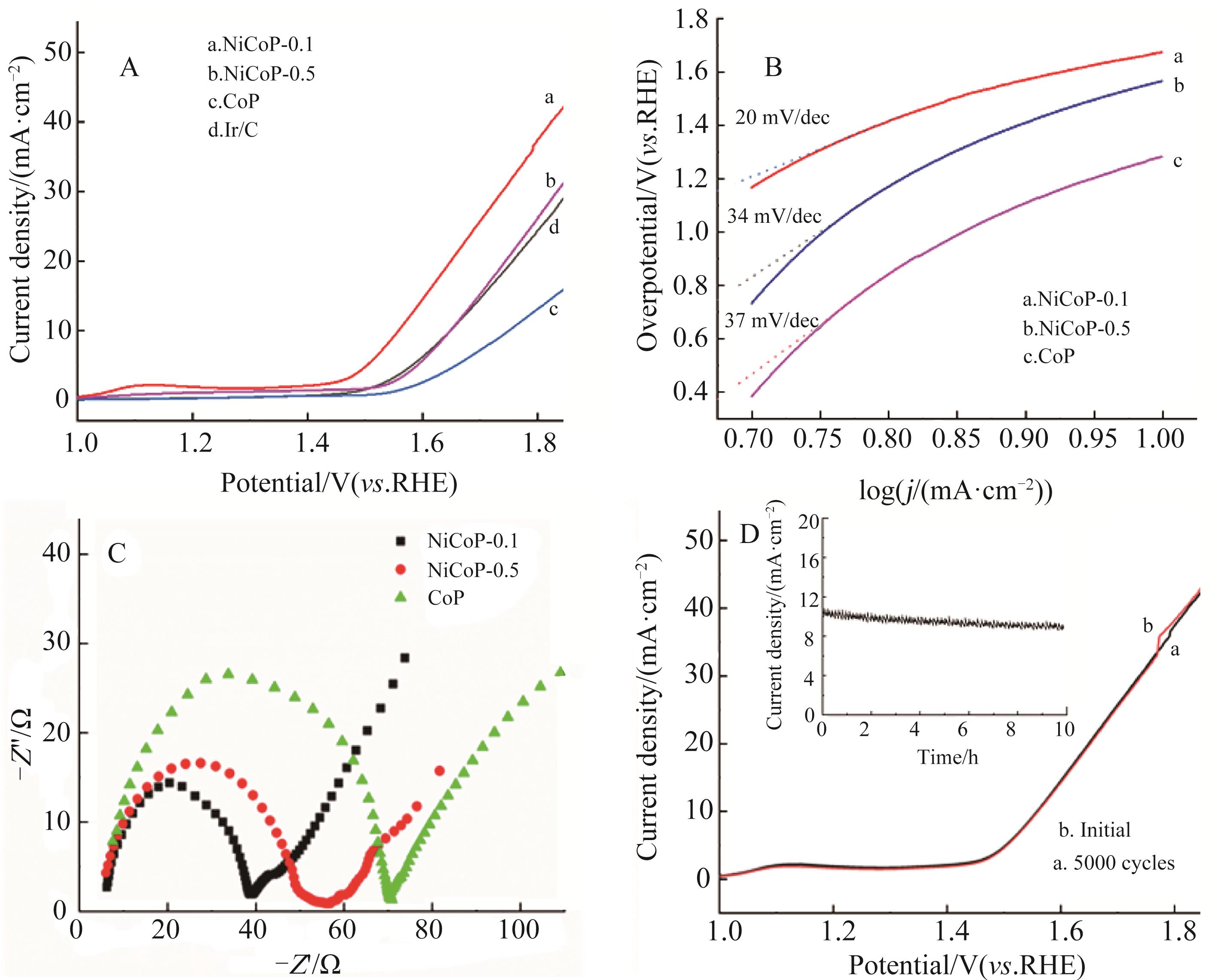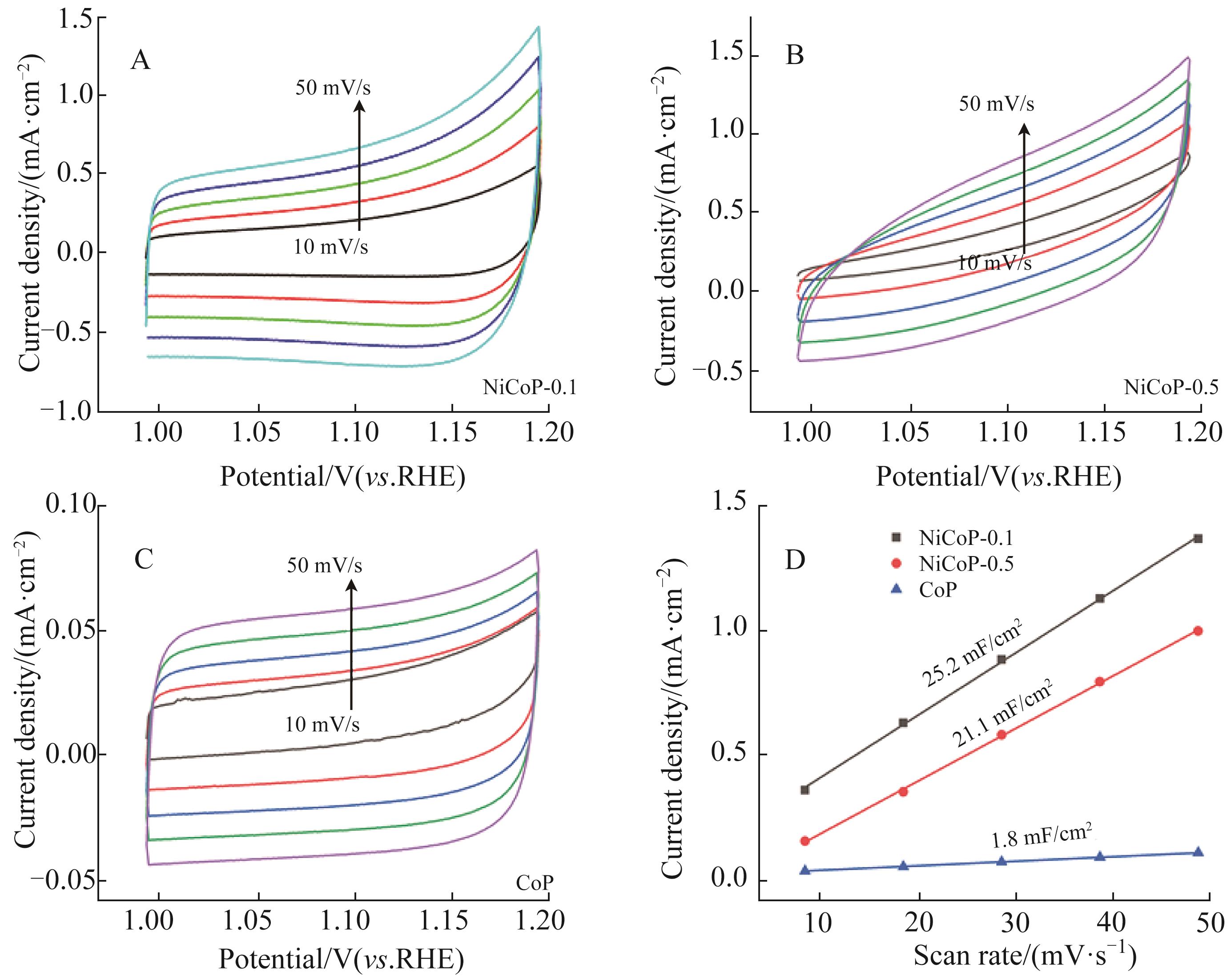| 1 |
WANG L, DUAN X, LIU X, et al. Atomically dispersed Mo supported on metallic Co9S8 nanoflakes as an advanced noble-metal-free bifunctional water splitting catalyst working in universal pH conditions[J]. Adv Energy Mater, 2019, 10(4): 1903137.
|
| 2 |
WANG B, TANG C, WANG H, et al. A nanosized CoNi hydroxide@hydroxysulfide core-shell heterostructure for enhanced oxygen evolution[J].Adv Mater, 2019, 31(4): 1805658.
|
| 3 |
LI J, CHEN J, WAN H, et al. Boosting oxygen reduction activity of Fe-N-C by partial copper substitution to iron in Al-air batteries[J]. Appl Catal B: Environ, 2019, 242: 209-217.
|
| 4 |
DUAN Y, YU Z, HU S, et al. Scaled-up synthesis of amorphous NiFeMo oxides and their rapid surface reconstruction for superior oxygen evolution catalysis[J]. Angew Chem Int Ed, 2019, 58(44): 15772-15777.
|
| 5 |
DUTTA S, INDRA A, FENG Y, et al. Self-supported nickel iron layered double hydroxide-nickel selenide electrocatalyst for superior water splitting activity[J]. ACS Appl Mater Interfaces, 2017, 9(39): 33766-33774.
|
| 6 |
XU Q C, JIANG H, DUAN X Z, et al. Fluorination-enabled reconstruction of NiFe electrocatalysts for efficient water oxidation[J]. Nano Lett, 2021, 21(1): 492-499.
|
| 7 |
DUAN Y, LEE J Y, XI S B, et al. Anodic oxidation enabled cation leaching for promoting surface reconstruction in water oxidation[J]. Angew Chem Int Ed, 2021, 60(13): 7418-7425.
|
| 8 |
ZHAO Y F, JIA X D, CHEN G B, et al.Ultrafine NiO nanosheets stabilized by TiO2 from monolayer NiTi-LDH precursors: an active water oxidation electrocatalyst[J]. J Am Chem Soc, 2016, 138(20): 6517-6524.
|
| 9 |
CHEN J S, LI H, CHEN S M, et al. Co-Fe-Cr(oxy)hydroxides as efficient oxygen evolution reaction catalysts[J]. Adv Energy Mater, 2021, 11(11): 2003412.
|
| 10 |
LIU D, AI H Q, LI J L, et al. Surface reconstruction and phase transition on vanadium-cobalt-iron trimetal nitrides to form active oxyhydroxide for enhances electrocatalytic water oxidation[J]. Adv Energy Mater, 2020, 10(45): 2002464.
|
| 11 |
MEN Y, LI P, ZHOU J H, et al. Tailoring the electronic structure of Co2P by N doping for boosting hydrogen evolution reaction at all pH values[J]. ACS Catal, 2019, 9(4): 3744-3752.
|
| 12 |
FAN K, ZOU H Y, LU Y, et al. Direct observation of structural evolution of metal chalcogenide in electrocatalytic water oxidation[J]. ACS Nano, 2018, 12(12): 12369-12379.
|
| 13 |
ZHOU G Y, LI M, LI Y L, et al. Regulating the electronic structure of CoP nanosheets by O incorporation for high-efficiency electrochemical overall water splitting[J]. Adv Funct Mater, 2020, 30(7): 1905252.
|
| 14 |
SONG J H, ZHU C Z, XU B Z, et al. Bimetallic cobalt-based phosphide zeolitic imidazolate framework: CoPx phase-dependent electrical conductivity and hydrogen atom adsorption energy for efficient overall water splitting[J]. Adv Energy Mater, 2017, 7(2): 1601555.
|
| 15 |
LI F, BU Y F, LV Z J, et al. Porous cobalt phosphide polyhedrons with iron doping as an efficient bifunctional electrocatalyst[J]. Small, 2017, 13(40): 1701167.
|
| 16 |
WU L L, WANG Z, LONG Y, et al. Multishelled NixCo3- xO4 hollow microspheres derived from bimetal-organic frameworks as anode materials for high-performance lithium-ion batteries[J]. Small, 2017, 13(17): 1604270.
|
| 17 |
WANG T, YANG C, LIU Y J, et al. Dual-shelled multidoped hollow carbon nanocages with hierarchical porosity for high-performance oxygen reduction reaction in both alkaline and acidic media[J]. Nano Lett, 2020, 20(8): 5639-5645.
|
| 18 |
LEE S, BAI LC, HU X L, et al. Deciphering iron-dependent activity in oxygen evolution catalyzed by nickel iron layered double hydroxide[J]. Angew Chem Int Ed, 2020, 59(21): 8072-8077.
|
| 19 |
YANG H, CHEN Z, HAO W, et al. Catalyzing overall water splitting at an ultralow cell voltage of 1.42 V via coupled Co-doped NiO nanosheets with carbon[J].Appl Catal B: Environ, 2019, 252: 214-221.
|
| 20 |
LI Y L, LIU J D, CHEN C, et al. Preparation of NiCoP hollow quasi-polyhedra and their electrocatalytic properties for hydrogen evolution in alkaline solution[J]. ACS Appl Mater Interfaces, 2017, 9(7): 5982-5991.
|
| 21 |
LIN H, WANG J W, GUO X W, et al. Phosphorized polyoxometalate-etched iron hydroxide porous nanotubes for efficient electrocatalytic oxygen evolution[J]. J Mater Chem A, 2018,6(47): 24479-24485.
|
| 22 |
ZHANG F S,WANG J W, LUO J, et al. Extraction of nickel from NiFe-LDH into Ni2P@NiFe hydroxide as a bifunctional electrocatalyst forefficient overall water splitting[J]. Chem Sci, 2018, 9(5): 1375-1384.
|
| 23 |
WANG Z Y, YANG J, WANG W Y, et al. Hollow cobalt-nickel phosphide nanocages for efficient electrochemical overall water splitting[J]. Sci China Mater, 2021, 64(4): 861-869.
|

 ), Jing-De LI1, Shu-Yan SONG2(
), Jing-De LI1, Shu-Yan SONG2( )
)



